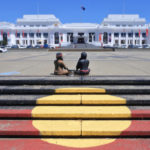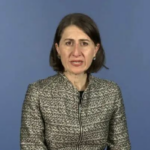Mum Faces Court After Leaving Kids Home-Alone

A 28-year-old stepmother has been arrested after leaving her children home-alone while she flew out of the country.
Speaking through an interpreter, she said the children’s passports didn’t arrive on time, forcing her to leave them at home while she sought to fix the situation. She feels police have no business interfering with her decision, saying it “was between her and the children”.
“If you are really concerned about my children, can you please help me sort out this post office and locate passports, because without passports my children will not be legal here,” the woman said.
The story so far…
Last week, police went to an address in Cloverdale, Perth where they found the two children aged 6 and 4, alone at home with the door unlocked. The children were reportedly “distressed and crying”. There were no other adults at the premises.
Neighbours say they did not know the children were alone until police arrived and took them away. They are now in the care of the Department of Child Protection and Family Services.
Police allege the woman left Australia and travelled to Bali last Tuesday, returning on Thursday. Border Force Officers detained her when she arrived at the airport.
The woman, who has not been identified, is believed to be in a de-facto relationship with the children’s father, who is currently out of the country. He is expected to also be arrested and charged upon his return.
Child Protection Minister Andrea Mitchell says she was “shocked” upon hearing about the situation. “Any incident where there are children being left alone is extremely concerning”, she said.
Facing court
Police have charged the woman with two counts of “engaging in conduct which could result in harm to a child in a person’s care and control”.
She will face Perth Magistrates Court on June 22nd.
Public information
The Child Family Community Australia website explains that maltreatment refers to any non-accidental behaviour by parents, caregivers, other adults or older adolescents that is outside the norms of conduct and entails a substantial risk of causing physical or emotional harm to a child or young person. These can be intentional or reckless, and are usually divided into five types of maltreatment.
- physical abuse;
- emotional maltreatment;
- neglect;
- sexual abuse; and
- exposure to family violence.
Child neglect in NSW
Parents and carers have a legal duty to provide adequate care for, and not to harm, children in their charge.
In NSW, offences relating to child physical abuse and neglect are contained in sections 42 to 44 of the Crimes Act 1900, which come with different maximum penalties depending on the nature and seriousness of the circumstances.
Section 42 makes it an offence to recklessly or intentionally inflict grievous bodily harm on a child, whether during or after delivery, and whether or not the child is ‘wholly born’. The maximum penalty is fourteen years’ imprisonment.
Section 43 contains the offence of intentionally abandoning or exposing a child under 7 to danger of death or serious injury without reasonable excuse. The maximum penalty for that offence is 5 years imprisonment.
Section 43A is titled ‘Failure of persons with parental responsibility to care for child’ and prescribes a maximum penalty of 5 years in prison for anyone with ‘parental responsibility for a child’ who intentionally or recklessly fails to provide the child with the ‘necessities of life’, without reasonable excuse.
For the purposes of that section, ‘parental responsibility’ covers the ‘duties, powers, responsibilities and authority in respect of a child’, although there is no list of what that includes.
Section 44 says that a person who is under a legal duty to provide another with the necessities of life, and intentionally or recklessly fails to do so without reasonable excuse, is subject to a maximum penalty of 5 years’ imprisonment.
These offences can be charged on top of, or instead of, other general assault charges such as ‘assault occasioning actual bodily harm’ (section 59) or ‘recklessly’ or ‘intentionally’ inflicting grievous bodily harm (sections 35 and 33 respectively).






